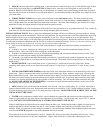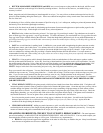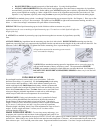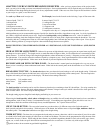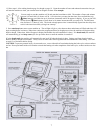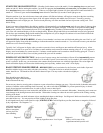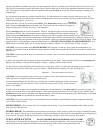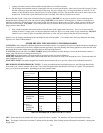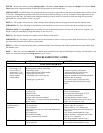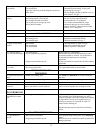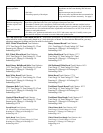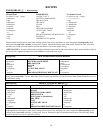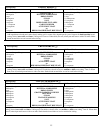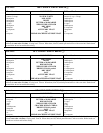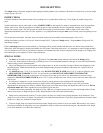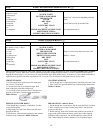
11
KNEAD – Knead time varies by setting: basic/specialty is 20 minutes; whole wheat is 30 minutes and dough is 20 minutes. Whole
wheat requires the longest knead time to better develop the gluten in whole-wheat flour.
SPECIAL NOTE: An audible alert will sound during the knead cycle to signal when to add special ingredients such as raisins or nuts,
if called for. Adding these ingredients at the alert prevents them from becoming over mixed or crushed. If these ingredients are not
required, ignore this alert. The audible alert during the knead cycle can be used as a reminder to check the dough for any needed
adjustment. See “Special Notes n Flour” on page 3.
RISE (1) – The dough is allowed to rise. Faint clicking sounds indicate gentle heat being provided to keep the chamber warm.
STIR-DOWN (1) – Next, the dough is stirred down by the knead bar to remove excess carbon dioxide gas created by the yeast.
SPECIAL NOTE: If using dough setting, an audible alert will sound and bread maker will turn off, as the cycle is complete. The
dough is ready for hand shaping, rising and baking in your own oven.
RISE (2) - The dough is allowed to rise again, but for a shorter period of time.
STIR-DOWN (2) - The dough is again stirred down by the knead bar to remove excess gas and to shape for the final rise. This final
stir-down ensures that the bread will have good texture.
RISE (3) - A final rise helps the dough achieve maximum height. Faint clicking sounds indicate gentle heat being provided to keep
the chamber warm.
BAKE - Bake time varies by crust color. An audible alert indicates bread is done and 0:00 appears in display. If bread maker is not
turned off, it automatically goes into keep warm for up to 3 hours.
TROUBLESHOOTING GUIDE
PROBLEM POSSIBLE CAUSE SOLUTION
LOAF SIZE AND SHAPE
1. Short loaves.
On average, 1 lb.
loaves will be 4
inches high; 1½ lb.
loaves 5 to 6 inches
high at regular
bread settings.
- Wheat breads will be shorter due to less gluten-
forming protein in whole wheat flour.
- Not enough liquid
- Sugar omitted or not enough added.
- Wrong type of flour used.
- Not enough yeast used or too old.
- Wrong type of yeast used.
- Normal situation, no solution.
- Increase liquid by 1 tablespoon.
- Add ingredients as listed in recipe.
- Do not use all-purpose flour.
- Measure amount recommended and check
freshness date on package.
- Use correct type of yeast, especially
important for bread machine/fast-rising
yeasts.
2. Flat loaves, no rising -Yeast omitted.
-Yeast too old.
-Liquid too hot.
-Too much salt added.
-Sugar or other sweetener omitted.
-If using timer, yeast got wet before bread making
process started.
-Add ingredients as listed in recipe
-Check expiration date.
-Use lukewarm liquid, about 75-85° F.
-Use amount recommended.
-Add ingredients as listed in recipe.
-Push dry ingredients into corners of pan.
-Make well in center for yeast.
3. Top inflated,
mushroom-like in
appearance.
-Too much yeast.
-Too much sugar.
-Too much flour.
-Substituted active dry yeast for bread machine/fast-
rising yeast.
-Not enough salt.
-Warm, humid weather.
-May be caused by high altitude.
-Reduce yeast by ¼ to ½ teaspoon.
-Reduce sugar by 1 teaspoon.
-Reduce flour by 2 to 3 tablespoons.
-Use correct amount of bread machine/fast-
rising yeast.
-Use amount recommended in recipe.
-Reduce liquid by 1 tablespoon and reduce
yeast by ¼ to ½ teaspoon.
-See “High Altitude” section on pg. 7
4. Top and sides cave in -Too much liquid.
-Too much yeast.
-Reduce liquid by 1 tablespoon.
-Use amount recommended in recipe.



